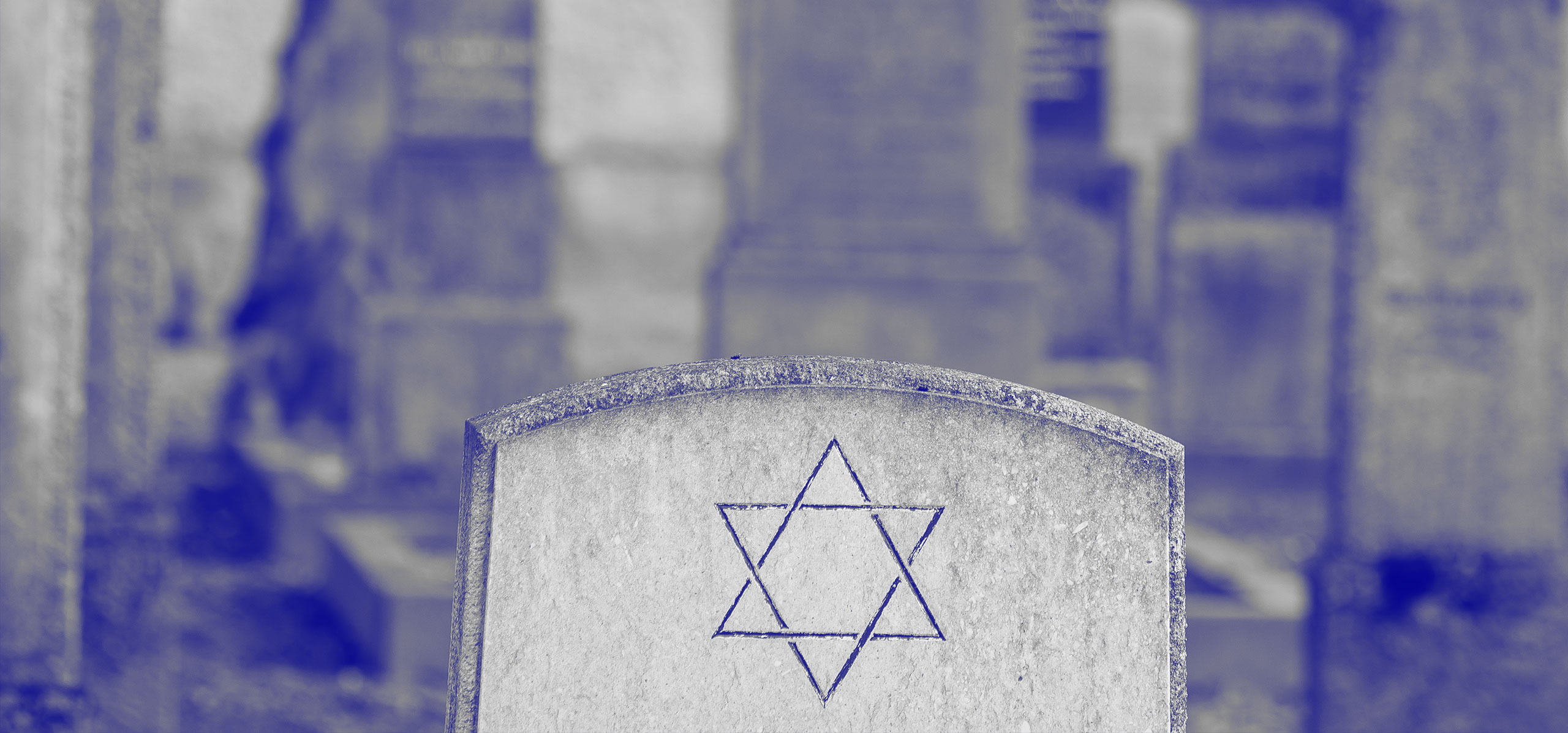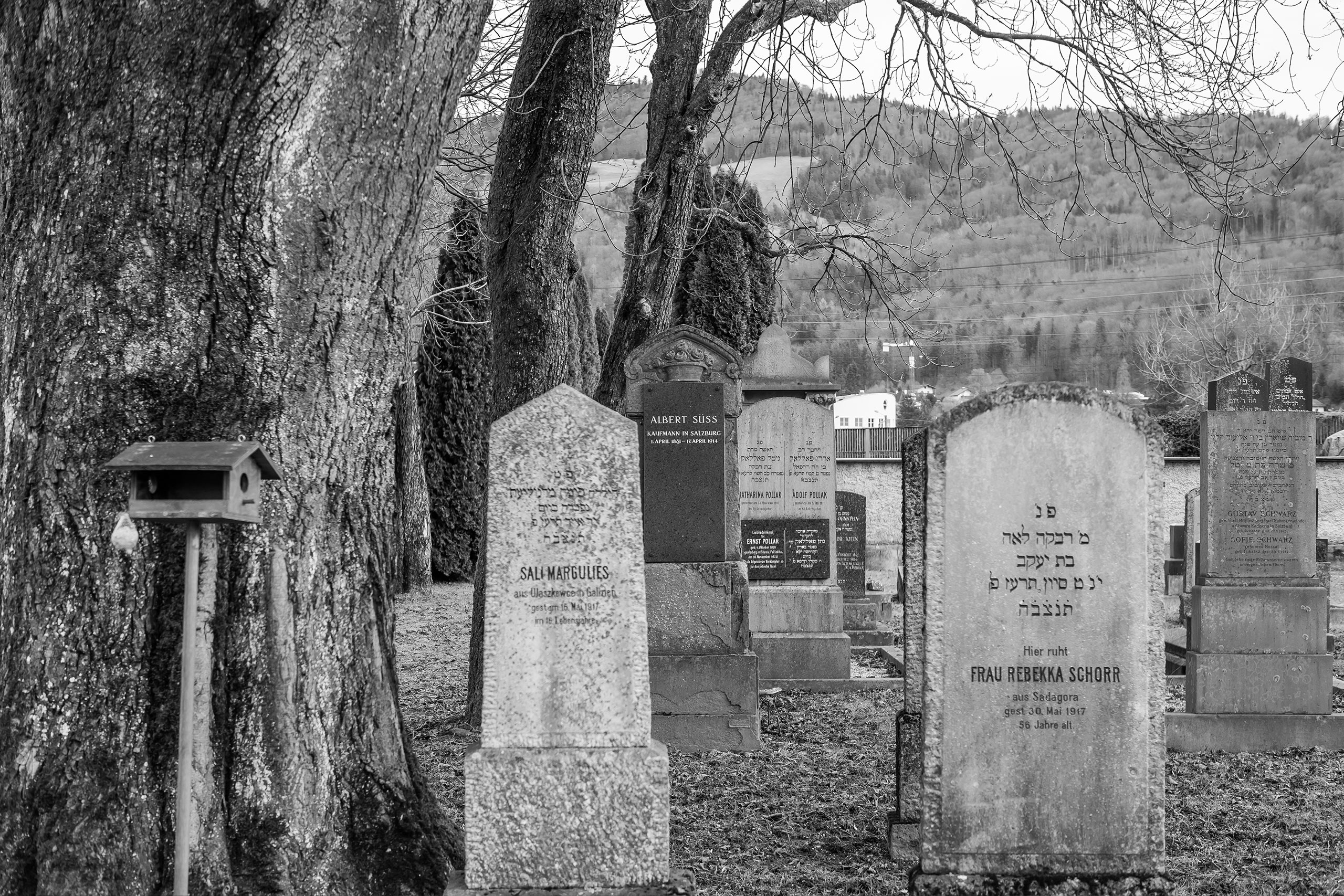Cemetery
The cemetery of the Salzburg Jewish community is located far outside the city centre, in a southerly direction on the S-Bahn line to Hallein and Golling in the district of Aigen. The cemetery site at Uferstrasse 47 was established in 1893. Previously, Jews had to be buried in the city’s municipal cemetery or transferred to Jewish cemeteries outside the city. The area was expanded in 1932.
During the Second World War, the cemetery was desecrated and partially robbed of its grave monuments. Today the cemetery counts some 450 graves.
In addition to the older graves located immediately by the entrance, the memorial stones commemorating the grave monuments destroyed and stolen during the Nazi era are significant.
Another striking feature is the burial ground in the new part of the grounds, comprising around 200 graves, where the so-called displaced persons who died in the Salzburg camps in the post-war period found their final resting place. Among them is an especially large share of mothers and children, for whom there are impressive memorial plaques.
In the rear part of the cemetery, the graves of Marko Feingold (1913–2019), long-time president of the Salzburg Kultusgemeinde, Robert Jungk (1913–1994), publicist and futurologist (born Robert Baum), and Donald Kahn (1925–2014), publisher, art collector, and patron of the arts, all three of whom are honorary citizens of the state capital of Salzburg, can be found side by side in a single line.
There are also two buildings on the grounds: the Tahara House, which is used for the ritual washing of the deceased; and the so-called gatehouse, which was (re)built in 2000/2001.
The city of Salzburg has generously taken on the horticultural care of the entire cemetery.
The area is closed for security reasons. Relatives can visit a grave through the office of the Jewish community. The Jewish community Salzburg offers those interested guided tours through the cemetery several times a year, during which the Jewish death and mourning rituals are also discussed.

